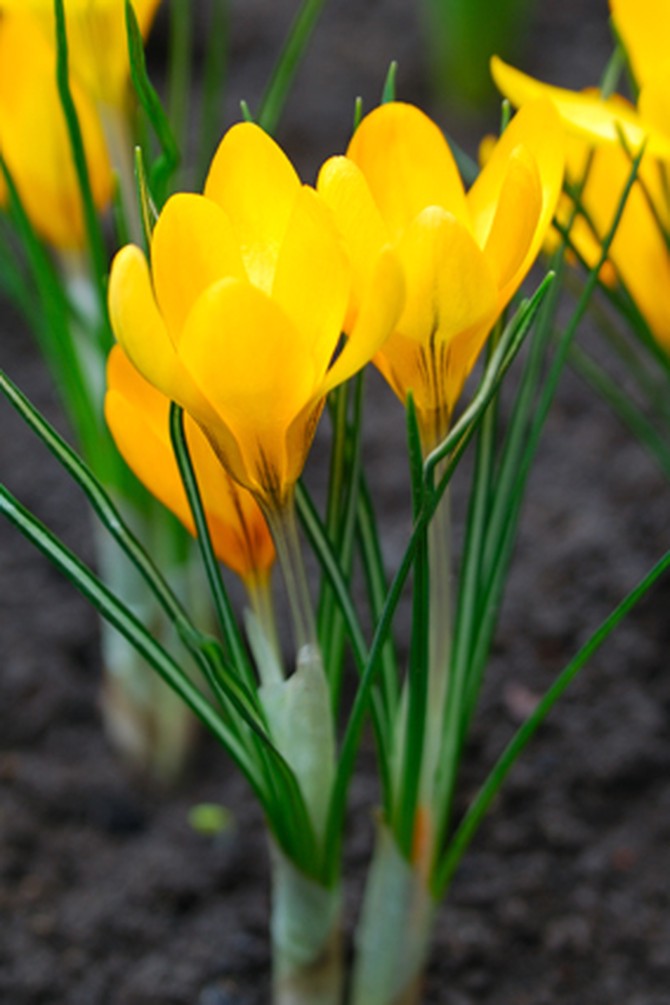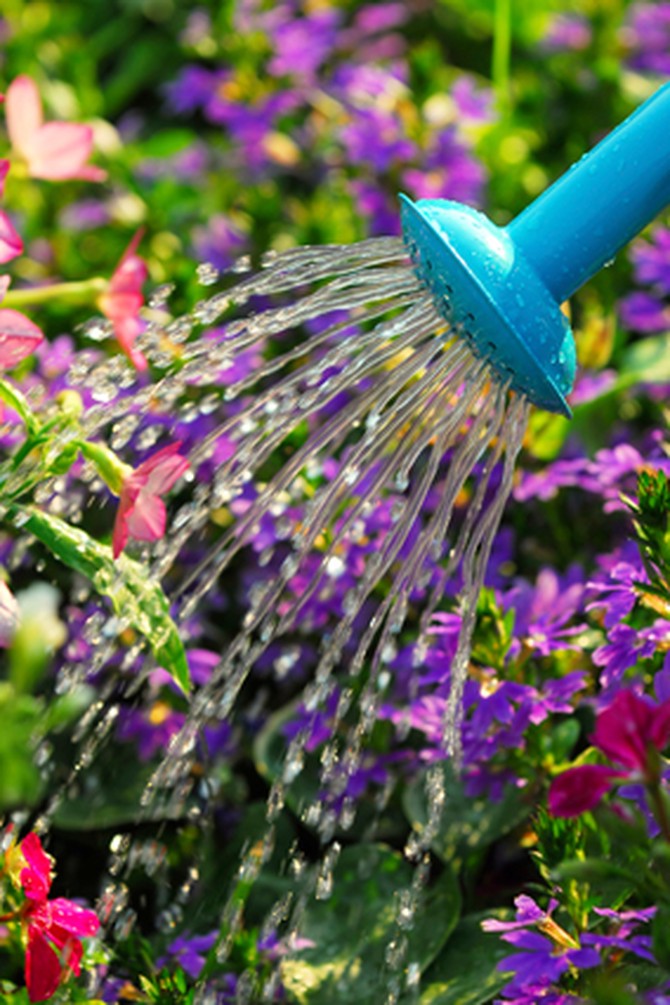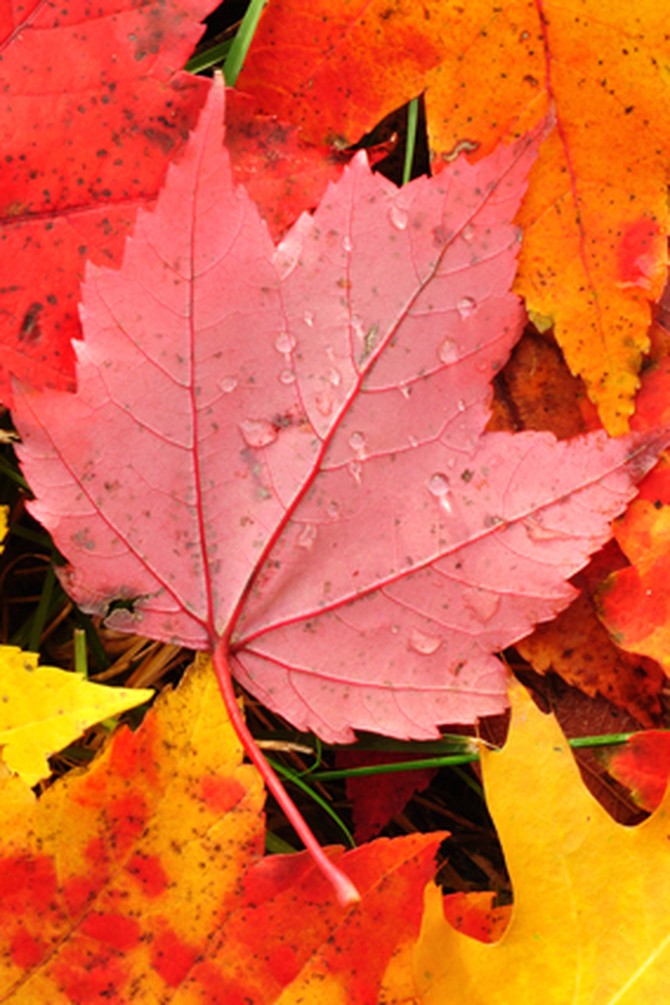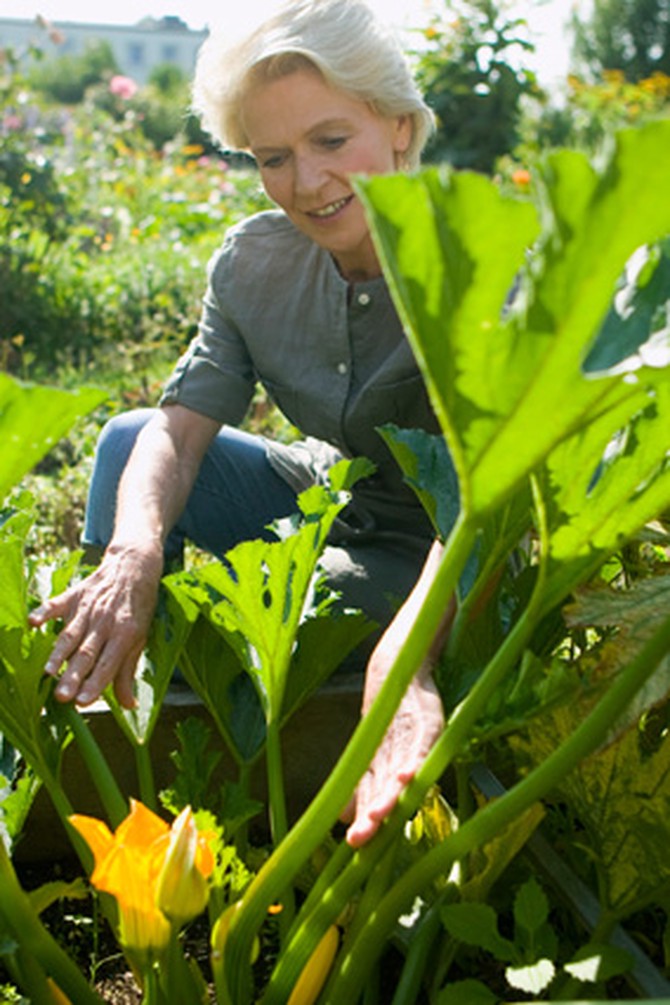5 Secrets to Getting Gorgeous Flowers
Teri Dunn Chace, author of The Anxious Gardener's Book of Answers gives her best advice.
By Abbe Wright

Photo: Thinkstock
Prune at the Right Time
The tidy gardener in all of us wants to cut back our bushes and our trees so that they look nice. If you cut off the leaves spring flowers, like daffodils or irises, you'll be depleting their bulbs of the starch they need for next year's display. Same goes for bushes like lilac, roses or forsythia: Trim them in late summer and you could be chopping off the flower buds—which means no blooms the following season. Pruning larger trees in August could spur new growth, which would be vulnerable to cold weather.
The right way: Don't touch the leaves of spring-bloomers until they've totally faded. Trim back a flowering bush or tree right after it blooms, before it starts to form next year's flower buds.
If you've goofed: "Well, it's not the end of the world," Chace says. "Let them recover. Healthy plants are fairly forgiving." But it may be a season or two before you get the flowers or foliage you'd hoped for.
The right way: Don't touch the leaves of spring-bloomers until they've totally faded. Trim back a flowering bush or tree right after it blooms, before it starts to form next year's flower buds.
If you've goofed: "Well, it's not the end of the world," Chace says. "Let them recover. Healthy plants are fairly forgiving." But it may be a season or two before you get the flowers or foliage you'd hoped for.

Photo: Thinkstock
Don't Forget About the Dirt Devils
The bed gets plenty of sunlight, you water regularly, and the plants you're trying to grow are practically foolproof—yet nothing is thriving. Why? Chace points to lousy soil as the culprit.
The right way: Prepare the ground before you put a single flower in it. Most plants prefer well-drained ground, where the earth is crumbly and dark. If your dirt is compacted, or gritty, it could be depleted, it could be too close the road (i.e., full of road salt), or it could be not dirt at all (hard-packed clay). You'll need to add some organic material, like compost or chopped-up leaves, folding them into the soil to a like you would with cake batter, until you get something that resembles that rich, dark soil.
If you've goofed: Try digging up plants that are still alive, expanding each hole a bit, and adding organic matter—or replace the bed altogether.
The right way: Prepare the ground before you put a single flower in it. Most plants prefer well-drained ground, where the earth is crumbly and dark. If your dirt is compacted, or gritty, it could be depleted, it could be too close the road (i.e., full of road salt), or it could be not dirt at all (hard-packed clay). You'll need to add some organic material, like compost or chopped-up leaves, folding them into the soil to a like you would with cake batter, until you get something that resembles that rich, dark soil.
If you've goofed: Try digging up plants that are still alive, expanding each hole a bit, and adding organic matter—or replace the bed altogether.

Photo: Thinkstock
Understand the Word "Watering"
Plants need water in order to thrive, but getting it to them—so much more complicated than it first sounds: There's overwatering, underwatering, watering the wrong part of the plant (the leaves instead of the roots), and each can cause the demise of a number of varieties.
The right way: Determine how much water a plant, flower bed or lawn needs (online guides can help), and then deliver it with as little waste as possible. (Which is to say: Standing over part of your garden with the hose may not do the trick.) "A good, basic overall tip that I always relay is that deep watering is best," Chace says. "It inspires plant roots to grow deeper into the earth, making them healthier and more drought-resistant. This is true for your rosebushes as well as your front lawn."
If you've goofed: Your plants will let you know—they'll wilt or their leaves will turn yellow. "If you mend your ways, chances are they'll recover," Chace says. The exception is extreme overwatering: Many garden plants can die in truly soggy soil—root systems can rot in as little as a day—and the only solution is to tear them out and start again.
The right way: Determine how much water a plant, flower bed or lawn needs (online guides can help), and then deliver it with as little waste as possible. (Which is to say: Standing over part of your garden with the hose may not do the trick.) "A good, basic overall tip that I always relay is that deep watering is best," Chace says. "It inspires plant roots to grow deeper into the earth, making them healthier and more drought-resistant. This is true for your rosebushes as well as your front lawn."
If you've goofed: Your plants will let you know—they'll wilt or their leaves will turn yellow. "If you mend your ways, chances are they'll recover," Chace says. The exception is extreme overwatering: Many garden plants can die in truly soggy soil—root systems can rot in as little as a day—and the only solution is to tear them out and start again.

Photo: Thinkstock
Don't Aim for Perfectionist Raking
People spend hours and hours raking and carting away autumn leaves, but this exposes your yard to winter's harshness and deprives it of a bounty of free (free!), beneficial organic matter.
The right way: Raking is a good first step—otherwise leaves tend to mat down and block air and water. Next, chop them up and return the bits to your beds or lawn, sprinkling them a few inches thick. No special mulching tools or equipment is needed, either—just run your lawnmower on a high setting over a leaf pile a few times. You'll be amazed how much the bulk is reduced when you do this.
If you goofed: Chace suggests asking your neighbors for some of their mulch, or hurrying to the garden center to buy some in bags.
The right way: Raking is a good first step—otherwise leaves tend to mat down and block air and water. Next, chop them up and return the bits to your beds or lawn, sprinkling them a few inches thick. No special mulching tools or equipment is needed, either—just run your lawnmower on a high setting over a leaf pile a few times. You'll be amazed how much the bulk is reduced when you do this.
If you goofed: Chace suggests asking your neighbors for some of their mulch, or hurrying to the garden center to buy some in bags.

Photo: Thinkstock
Be Mindful of the Feeding Schedule
Plants, like humans, need to eat, and often the food they eat determines if they'll grow big and lush. But fertilizing plants at the wrong time could prove detrimental.
The right way: Fertilize plants in the spring and early summer, when plants are actively growing. Stop as fall approaches—you don't want plants headed into winter with vulnerable new growth exposed. Make sure you are matching the kind of fertilizer to the type of plant and adhere to dosage suggestions. Then apply to damp ground and follow with a good watering to get the food straight to the roots.
If you've goofed: If you've realized your mistake within a day or two, Chace suggests thoroughly watering the area to flush out fertilizer. If new buds have shown, and a frost is on the way, do your best to minimize the damage: Cover the plants with sheets or cardboard boxes overnight.
Next: 7 ways to create a gorgeous bouquet
The right way: Fertilize plants in the spring and early summer, when plants are actively growing. Stop as fall approaches—you don't want plants headed into winter with vulnerable new growth exposed. Make sure you are matching the kind of fertilizer to the type of plant and adhere to dosage suggestions. Then apply to damp ground and follow with a good watering to get the food straight to the roots.
If you've goofed: If you've realized your mistake within a day or two, Chace suggests thoroughly watering the area to flush out fertilizer. If new buds have shown, and a frost is on the way, do your best to minimize the damage: Cover the plants with sheets or cardboard boxes overnight.
Next: 7 ways to create a gorgeous bouquet
Published 05/08/2012
As a reminder, always consult your doctor for medical advice and treatment before starting any program.

